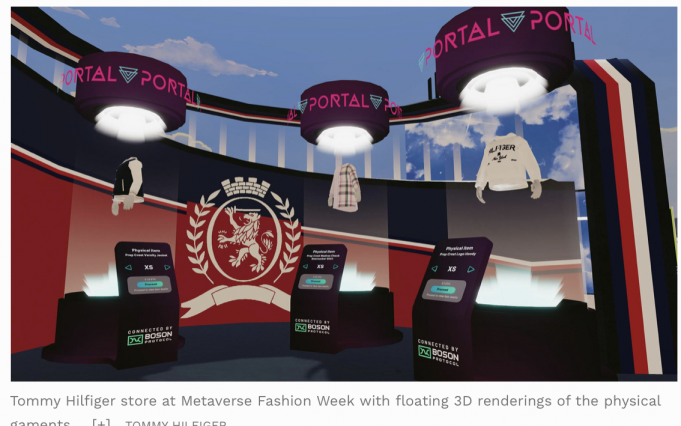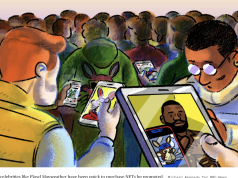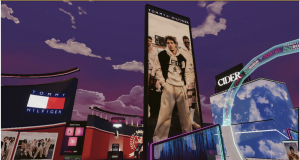Tommy Hilfiger joined the Metaverse Fashion Week conversation with a pop-up virtual retail space in Decentraland. Visiting avatars were met with floating 3D incarnations of physical merchandise, something which, in the real world, is more of a runway novelty than standard practice in visual merchandising.
“Our digital foundation was in a great place, and we were able to evolve from there,” said Martijn Hagman, CEO, of Tommy Hilfiger Global and PVH PVH -1.1% Europe. “So far, consumers are showing an appetite for these interactions, and we are committed to being relevant on their journey.”
When it comes to digital retail, Hilfiger has long operated at the forefront of innovation. The American powerhouse brand owned by parent, PVH Corp., has been hosting public facing, see now, buy now, fashion shows with shoppable livestreams and integrated AR technology since 2016.
It first entered the Metaverse via the gaming space, creating a Tommy Hilfiger Island community within Animal Crossing in 2020.
Most recently, in December 2021, it partnered with Roblox community creators who reinterpreted some of the brand’s signature pieces. The resulting collection of 30 digital wearables was available for players to purchase for their avatars to wear within the Roblox gaming universe. MORE FOR YOU‘No Christmas Trees, No Christmas Trees’ Another Shortage May Be On The WayThe Grocery Business Is Going To Get Much More CompetitiveCostco Addresses Supply Chain Pains By Chartering Their Own Ships
The Metaverse, the internet’s more spatial evolution, to put it in lay terms, is fragmented, consisting of many different types of platform so brands are currently exploring the diverse possibilities offered by each.









